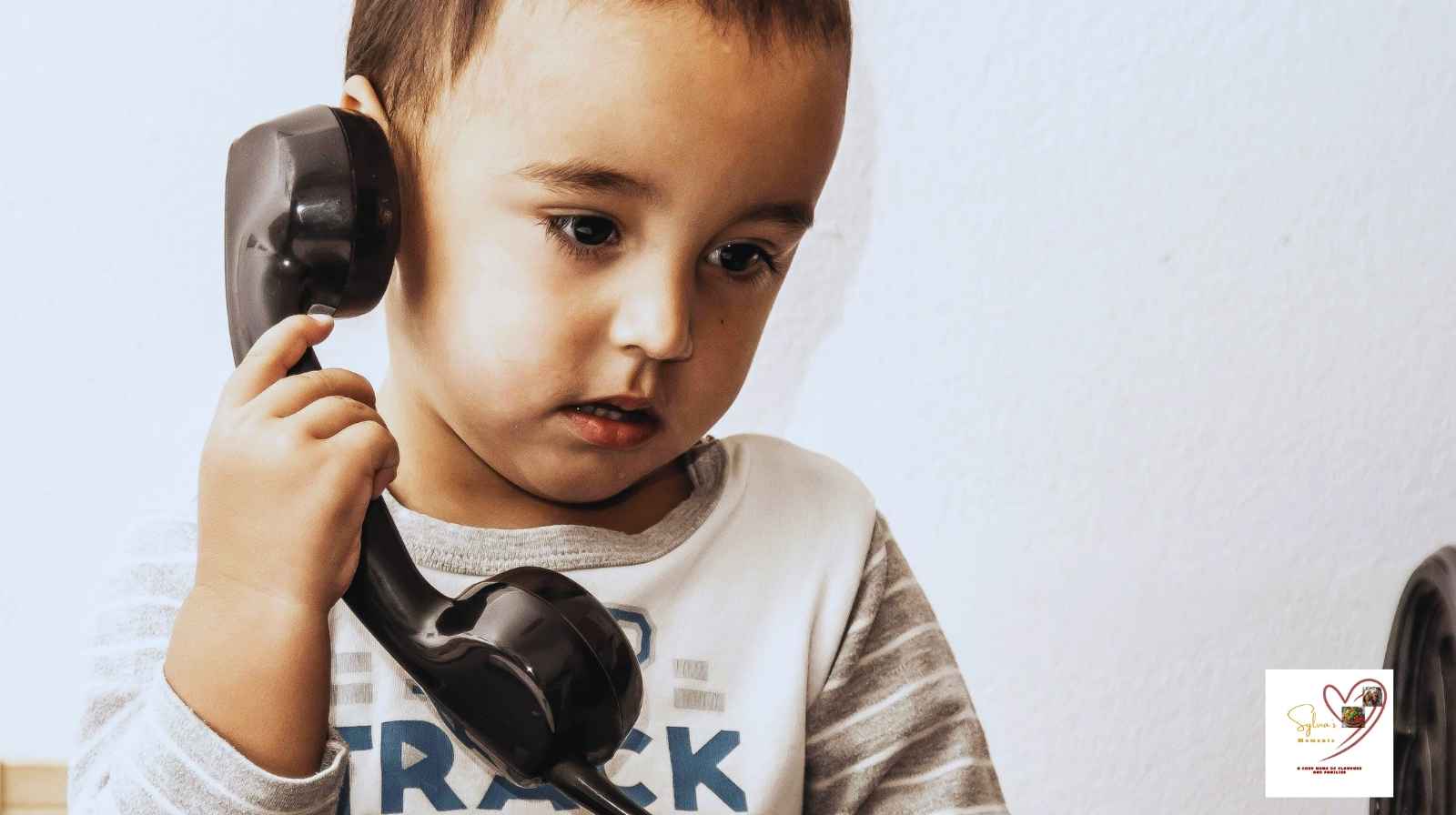It was 2 am, and I thought I was dreaming. Instead, I was greeted by the unmistakable sound of my four-year-old whispering into the phone, “Santa? Yes, it’s me. I really need that toy reindeer… please!” Somehow, in the middle of the night, my little one had decided that urgent matters of Christmas couldn’t wait until morning. And there I was, trying not to laugh, holding a mug of cold coffee that had long lost its warmth. By the end of this post, you’ll have practical tools, tips, and strategies to establish Internet Safety for Kids: Simple Healthy Digital Boundaries Every Parent Needs in 2025.
That moment, as absurd as it felt, made me realize something important: kids live in a world where digital wonders are always at their fingertips. Just like my four-year-old felt empowered enough to call Santa at an hour when most adults are deep in sleep, children today explore the internet with the same fearless curiosity. However, unlike a phone call to Santa, not every online adventure is harmless but and not every interaction is funny.
You’ll see how, with a little humor, empathy, and guidance, the online world can be a place where kids thrive, without parents losing sleep or their sense of humor.

Why Digital Boundaries Matter More Than Ever
Nowadays, children are spending increasing amounts of time online. Whether they are attending virtual classes, gaming, or chatting with friends, the risks grow just as fast as the opportunities. For instance, cyberbullying, exposure to inappropriate content, and online predators are real threats that require careful attention.
Additionally, organizations like UNICEF emphasize that while digital learning brings incredible benefits, it also introduces serious risks. According to their research, children face peer violence, manipulation, content that can lead to self-harm, and widespread disinformation.
Meanwhile, in the United States, the National Telecommunications and Information Administration (NTIA) warns that excessive or unmonitored social media use can negatively affect young people’s mental health.
Therefore, by setting simple digital boundaries, parents can protect their children while still letting them enjoy online activities.
Understanding the Risks Kids Face Online
Before building effective boundaries, it’s important to know what you’re guarding against.
1.Cyberbullying:
I remembered when a neighbor’s child was bullied online for being fat. She joined an age appropriate online study group with strangers, but instead of studying, they decided to make a party off her weight.
Children may receive mean messages, be excluded from groups, or be shamed online. These experiences can hurt deeply.
2.Inappropriate content:
These days, lots of Violent, sexual, or self-harm material appear unprovoked on many platforms in a bid to advertise products. Even AI is suggesting some harmful contents to kids. As a result, children are introduced to age inappropriate contents they shouldn’t consume.
3.Online exploitation:
Predators often use social media or chat to build trust and manipulate children. Imagine a full grown adult wooing a child online for sexual related fantasy. UNICEF highlights this as one of the most insidious online threats.
4.Privacy violations:
Without guidance, children may share too much personal information : name, address, or location with strangers.
5.Addictive use and screen overload:
Many social platforms use design tricks to keep kids online longer than is healthy.
Here are some actionable strategies that help keep children safe and balanced online.
1. Set Screen-Time Limits
This is one of the most important aspect of parenting. Having a child fully concentrating on screen without disturbance is tempting, but the long term effects are ugly.
a. Therefore, it is important for parents to establish daily or weekly caps that fit their children’s age and maturity. Firstly, this will help children maintain a steady routine while making them also to follow rules. I remembered when my elder sister started this routine in her house, all her children revolted. Even the youngest one refused to eat unless she was given tablets but she stood her ground. But at the long run, that helped to shape them into more conscious children than before, according to my sister.
b. Use parental controls or screen-time apps to help enforce limits.
c. Create “device-free zones” like the dinner table, bedrooms, or family activities.

These limits not only prevent burnout but also make room for offline connections.
2. Teach Privacy Protection → Internet Safety for Kids: Simple Healthy Digital Boundaries Every Parent Needs in 2025
I once heard that a stranger located a neighbor’s compound and stole her properties. He was able to do that simply because, her child gave him the home address and where he will get the house key to keep the imaginary toys he bought for her .To prevent these kind of events,
a. Talk to your children about never sharing personal information like full names, addresses, or school details online.
b. Enable strong privacy settings on devices, apps, and games.
c. Cover webcams when not in use. I use an external webcam and after using, I always unplug it from the computer system USB port. It is also important to use reliable software company and update as often as new version is out.

d. A kid was once insulted on the internet because of the inappropriate content her mother posted online years ago. That is the power of digital footprint. Explain the concept of a “digital footprint,” so kids understand the long-term impact of what they share.
UNICEF stresses that children must know how their online actions leave a trail.
3. Filter and Monitor Content
-
Use age-appropriate content filters and safe-search settings.
-
Review apps, games, and websites your child uses to ensure safety. Deactivate in appropriate apps that aren’t necessary.
-
I also Occasionally “co-pilot” their online experience by browsing, watching, or playing alongside them. This has helped me tremendously to filter contents in kids channels nowadays that feels too fast or inappropriate.

By doing so, you reduce risk while building trust and communication.
4. Foster Open Communication
-
Encourage kids to share if something online worries or scares them.

-
Ask gentle questions like, “What did you think of that video?”
-
Teach them to block, mute, or report negative interactions.
According to the U.S. Department of Homeland Security, active conversations are among the most effective protections.
5. Promote Digital Kindness & Respect
-
Someone once called one my little friend a bad name online and he reported to me. He felt so bad that he even reported to me to chat up with the perpetrator and reprimand him. Teach children that online space bullying by words can hurt as much as face-to-face ones.
-
Encourage them to pause before posting: “Would I say this in person?”
-
Reinforce empathy: when they see meanness online, encourage positive replies or standing up safely for others.

UNICEF emphasizes building respect alongside boundaries. (UNICEF)
6. Stay Informed and Empowered
-
Keep up with industry changes. The NTIA recommends default privacy protections and age-appropriate experiences.
-
Understand legal protections for children under 13 in your country of residence. For instance, like Children’s Online Privacy Protection Act .
-
Advocate for safer online spaces using methods approved by law wherever you are residing.
7. Model the Behavior.
Limit your own screen time and practice mindfulness online. Children learn more by actions and not by the words of the mouth alone. As an adult seeking for internet safety for kids, practicing what you preach will go a long way to yielding a positive outcome.
Why Digital Boundaries Build Trust, Not Barriers
Some parents worry boundaries will shut their child out. However, thoughtful rules build trust. They show you care deeply while helping kids navigate the online world responsibly. Internet Safety for Kids: Simple Healthy Digital Boundaries Every Parent Needs in 2025 is not about just creating boundaries, but to water the ground for a more fulfilling childhood.
UNICEF supports this approach: empower children with skills and confidence rather than restrict access.
Additionally, the United Nations highlights child and youth online safety as a global priority.
Looking Ahead: Internet Safety for Kids: Simple Healthy Digital Boundaries Every Parent Needs in 2025
-
Artificial Intelligence Risks: According to UNICEF, AI-driven platforms suggest content that may be manipulative.
-
Policy Push: According to NTIA, Governments push for safer app designs and privacy defaults.

-
Global Campaigns: Initiatives like Safer Internet Day unite communities to create safer online spaces. (UNICEF)
Conclusion: Safeguarding the Future
Ultimately, in 2025, internet safety for kids is non-negotiable. By establishing simple digital boundaries every parent needs, you help your child grow, learn, and play safely.
You don’t have to be a tech expert. Instead, practice empathy, maintain open communication, and implement practical strategies. Work with your child, not against them. Teach respect, not fear. Protect them, and empower them.
Together, you can create a digital environment that supports exploration, learning, and safety, all at once.

Other interesting Reads


